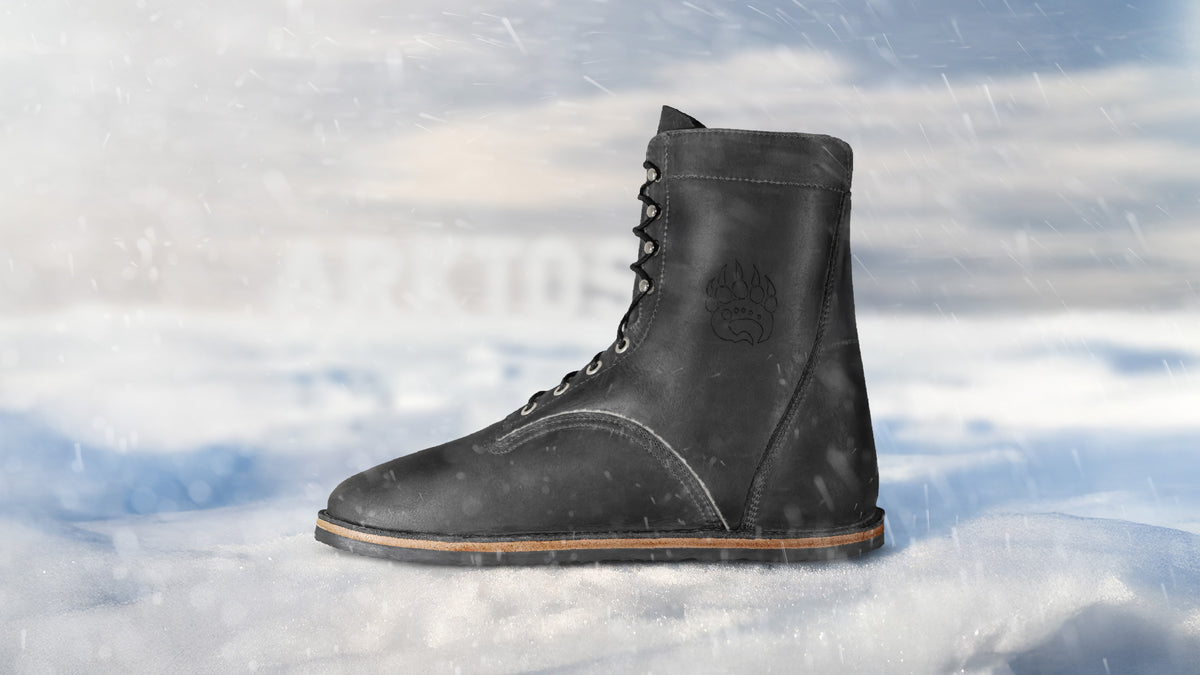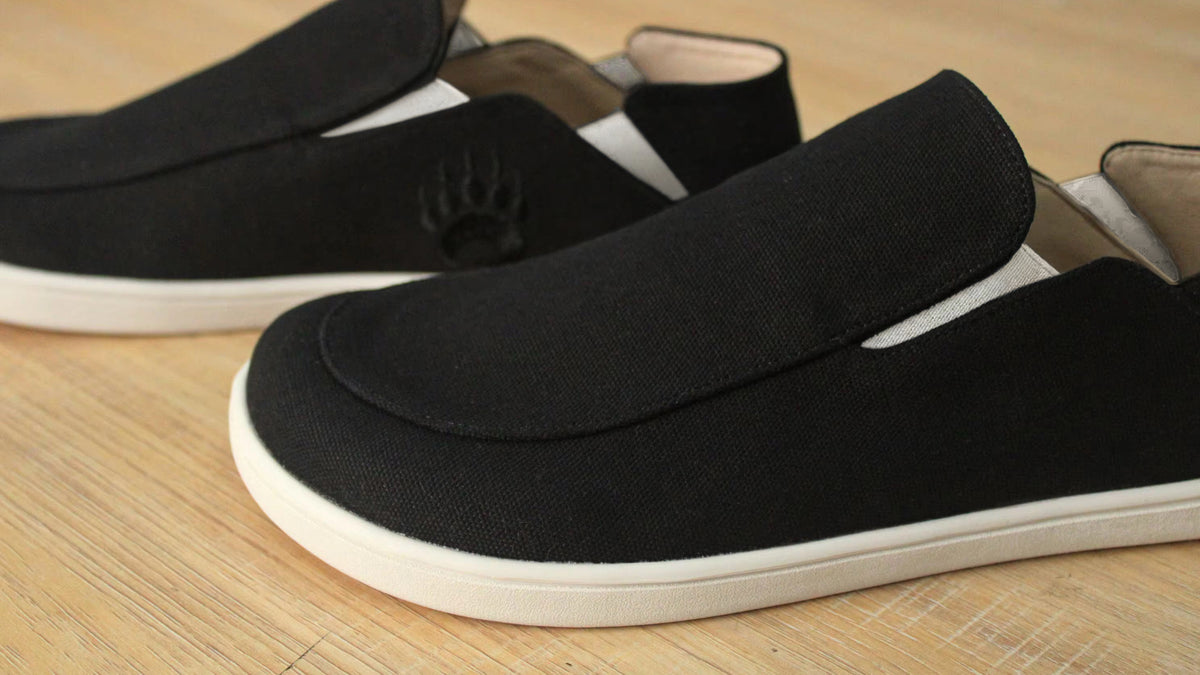Barefoot Shoes 101
Barefoot shoes, also known as minimalist shoes, are designed to closely mimic the experience of walking barefoot while still providing some level of protection for the feet. These shoes typically feature a design that allows for natural foot movement, supporting the foot’s natural biomechanics. This type of footwear encourages a natural gait, enhances balance and stability, and promotes stronger foot muscles. By enabling a more natural foot position and motion, barefoot shoes can contribute to improved foot health and overall well-being.
The Features of Barefoot Shoes
Barefoot shoes are crafted with distinctive features that set them apart and provide various advantages. These characteristics are carefully designed to enhance the functionality and benefits of these shoes. Some of these characteristics are:
Wide Toe Box
Barefoot shoes are designed to be wide to promote natural toe splay, essential for proper balance and stability, and to distribute weight more evenly across the foot, enhancing overall foot mechanics. This wider design reduces the likelihood of discomfort and foot issues, such as bunions. It improves proprioception by allowing the toes to sense the ground better, enhancing balance and coordination. The increased toe space engages the intrinsic foot muscles, supporting the arch and leading to stronger, healthier feet. Overall, the wide design of barefoot shoes mimics natural foot biomechanics, reducing the risk of foot deformities and contributing to improved foot health and functionality.
Flat (Zero-Drop) Sole
Barefoot shoes are flat to mimic the natural foot position, promoting a more natural gait and reducing the risk of injuries associated with an elevated heel. A flat sole helps in maintaining the natural alignment of the foot, ankle, and lower leg, thereby allowing the foot muscles and joints to function optimally as they would in a natural-state. This design also enhances proprioception and stability by enabling a greater surface area contact with the ground, which is essential for better balance and reduced impact forces during movement.
Flexible Frame
Barefoot shoes are designed to be flexible to mimic the natural motion of the foot, allowing for better foot mechanics, muscle activation, and overall stability. This flexibility supports natural foot movements, reduces the impact of stiff conventional footwear on foot development, and enhances muscle activation in the lower legs, improving proprioceptive sensibility and muscle strength. Flexible footwear also distributes pressure more evenly across the foot, reducing peak plantar pressures and preventing injuries. Moreover, barefoot shoes improve stability and mobility by maintaining better balance during movement.
The Benefits of Barefoot Shoes
Barefoot and minimalist shoes have recently gained popularity due to their unique design and potential health benefits. These shoes mimic the sensation of walking barefoot while still offering some protection and support. But what are the specific benefits of wearing barefoot shoes?
Increased Muscle Engagement
One of the primary benefits of barefoot shoes is enhanced muscle engagement. Traditional shoes with thick soles and arch support can weaken foot muscles over time. Barefoot shoes, however, promote natural foot movement, helping to strengthen these muscles and improve overall foot health.
Conventional shoes often limit natural foot movement due to their rigid structure and elevated heels. In contrast, barefoot shoes allow for a greater range of motion in the foot and ankle joints, encouraging the use of otherwise constrained muscles. This natural motion includes greater toe splay, increased dorsiflexion, and more pronounced arch dynamics, all of which engage the intrinsic foot muscles and lower leg muscles.
Without the artificial support provided by conventional footwear, the stabilizing muscles of the foot and ankle, such as the tibialis anterior, gastrocnemius, and peroneus longus, are required to work harder to maintain balance and stability. The lack of arch support in barefoot shoes means that the muscles and tendons supporting the foot arch, such as the plantar fascia and the intrinsic foot muscles, are more actively engaged.
Barefoot shoes often result in a shift from a heel strike to a midfoot or forefoot strike pattern during walking and running. This shift emphasizes using the calf muscles (gastrocnemius and soleus) and the foot’s intrinsic muscles to absorb impact and propel the body forward. The more natural gait mechanics reduce reliance on the cushioning of the shoe and increase the demand on the muscles to manage impact forces and provide propulsion.
By promoting natural foot mechanics and requiring greater muscle activity for balance and stability, barefoot shoes effectively increase muscle engagement and contribute to stronger and more functional feet and legs.
Enhanced Balance & Proprioception
Proprioception is the body's ability to sense its position in space. Wearing barefoot shoes can help improve proprioception by allowing the foot to move more naturally and engage with the ground. This can improve balance and stability, reducing the risk of falls and injuries.
As we know, wearing barefoot or in minimalist shoes significantly increases the activation of foot and ankle muscles compared to conventional footwear. This heightened muscle engagement helps strengthen these muscles, which in turn enhances stability and proprioception.
The human foot has numerous cutaneous mechanoreceptors (sensory receptors located in the skin) that play a critical role in balance and movement control by sensing pressure, vibration, and skin stretch changes. Barefoot and minimalist shoes allow these receptors to function more effectively by providing direct feedback from the ground, enhancing proprioception and balance.
Improved Posture
Studies have shown that wearing minimal shoes improves postural stability. Participants exhibited better control over their center of pressure movements while standing and walking when wearing minimal shoes than conventional shoes.
Traditional raised-heel shoes can disrupt natural body alignment, leading to poor posture, forward pelvic tilt, spinal curvature, and hunched shoulders. Over time, this can cause chronic postural issues. In contrast, barefoot shoes promote natural gait and alignment, encouraging a balanced and upright posture and reducing the risk of posture-related problems associated with conventional footwear.
Beaches barefoot shoes activate more foot and lower leg muscles than conventional footwear. This increased muscle activation helps strengthen these muscles, leading to better postural control and stability.
Barefoot shoes allow for a more natural foot positioning, including a wider toe spread and lower heel elevation. This natural positioning promotes a more upright posture by preventing the pelvis’s forward tilt and the spine’s compensatory curvature that can occur with higher-heeled shoes.
Reduced Joint & Back Pain
Traditional raised-heeled shoes can also cause back pain and strain joints and muscles by placing undue stress on the knees, hips, and lower back. In contrast, barefoot shoes promote a natural walking pattern, evenly distributing weight and reducing joint impact. This better alignment can alleviate joint and back pain, offering a healthier alternative for overall physical well-being.
Barefoot shoes promote a flatter foot placement and a larger contact surface area. This distribution of pressures across a larger area reduces peak plantar pressures at the heel and metatarsal regions, which can alleviate stress on the joints and lower back.
Wearing barefoot shoes typically reduces the initial vertical peak ground reaction force. This means the forces are spread more evenly over time, which decreases the stress on the joints, particularly the knees and hips, potentially reducing the risk of osteoarthritis and other joint issues.
Increased Sensory Feedback
One of the unique benefits of barefoot shoes is the increased sensory feedback they provide. By allowing the foot to move freely and interact with the ground, barefoot shoes can enhance the wearer’s sensory experience, improving overall movement efficiency and performance.
Because the human foot is equipped with numerous cutaneous mechanoreceptors responsible for sensing changes in pressure, vibration, and skin stretch. Barefoot shoes allow these mechanoreceptors to function more effectively by providing direct and varied sensory input from the ground, which is often dampened by conventional shoes.
Reduced Risk of Foot Injuries
By strengthening the muscles in the feet and improving balance, wearing barefoot shoes can help reduce the risk of common foot injuries such as plantar fasciitis, shin splints, and stress fractures. The natural movement encouraged by barefoot shoes can also help prevent overuse injuries.
Because wearing barefoot shoes increases muscle activation, enhancing proprioceptive sensibility and muscle strength, which are essential for balance and stability, they reduce the risk of falls and related injuries.
Studies have shown that wearing barefoot shoes improves postural stability during standing and walking compared to conventional shoes. This is partly due to better sensory feedback from the feet, which enhances balance and stability, thereby reducing the risk of potential injuries.
Barefoot shoes offer numerous benefits, contributing positively to foot health and biomechanics. Whether you are an athlete or just simply looking to improve your overall well-being, incorporating barefoot shoes into your footwear rotation can provide a natural and beneficial experience.



